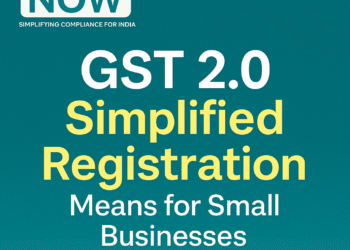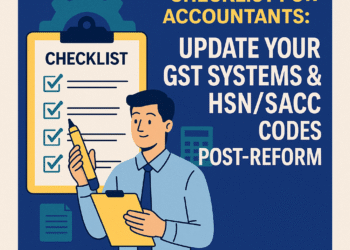Recently, the Government of India has introduced 3 new GST Return forms for businesses having GST registration namely GST Return Normal form, GST Return Sahaj form, and the GST Return Sugam form. The New GST Return Format was released by the Goods and Service Tax Network (GSTN) and has been made applicable from April 01, 2019 but the new format would be implemented mandatorily from July 01, 2019.
The new GST return forms Sahaj (RET-2) and Sugam (RET-3) are optional and are to be filed only by small taxpayers, i.e. taxpayers whose aggregate annual turnover in the previous financial year was up to INR 5 crores. GST return Sahaj (RET-2) form is required to be filed by taxpayers dealing only in B2C (business to customers) transactions and the HSN code based turnover applicability is also optional under this form. However, New RET-3 form under GST is for the taxpayers dealing in business to business (B2B) as well as business to customers (B2C) transactions. Both the returns can be filed only on a quarterly basis by the small taxpayers and Input Tax Credit for missing invoices cannot be claimed under the new returns .
The new GST returns can be easily downloaded in PDF format from the official site of goods and service tax portal.
Since majority of taxpayers consists of small taxpayers; therefore, these simplified returns will make the return filing procedure easier for them. The design and format of the new return forms are user-friendly for large taxpayers also.
The new GST normal return form (GST Ret-1) can be filed on a monthly or quarterly basis and is mandatory for the taxpayers having the turnover less than 5 crores or ZERO rated supply, while it is optional for large taxpayers i.e. those taxpayers whose aggregate annual turnover in the last financial year is more than INR 5 crores. The new GST normal return form is to be filed by all the taxpayers having all types of customers and are also supplying to e-commerce.
The format of quarterly return is very much similar to the monthly returns but will require lesser information than regular returns. However, payment for taxes is to be made on a monthly basis even if the taxpayer is filing quarterly returns.
For large taxpayers, filing monthly return is compulsory. The monthly return format has now been simplified and contains 2 main tables: one for reporting outward supplies and another one for availing input tax credit based on invoices uploaded by the supplier. The invoices can be reviewed and locked anytime by the buyer to avail input tax credit.
Those taxpayers who do not have made any purchase or sale in a period can now file NIL return through SMS.
Taxpayers are also given an option to file an amended return where they can make any amendments in their invoices and other relevant details filled in the monthly/quarterly return. Payments can also be made through the amendment returns which can further help to save the interest liability of the taxpayer.


















